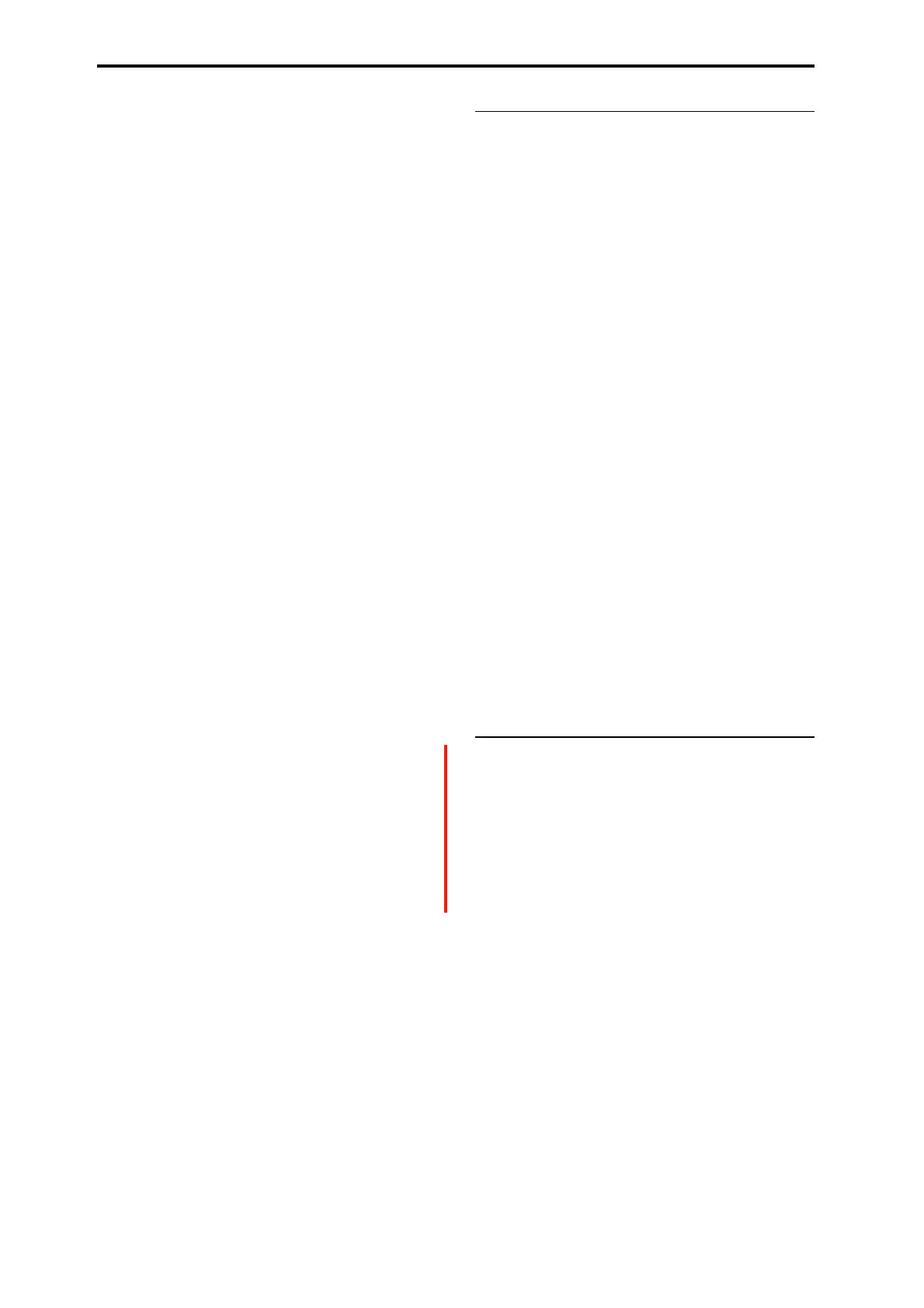EXi: STR-1 Plucked String
212
AMS [List of AMS Sources]
This selects a modulation source to control the Delay. For a
list of AMS sources, see “Alternate Modulation Source
(AMS) List” on page 901.
Intensity [–250…+250]
This controls the depth and direction of the Delay AMS
modulation.
Width [-100.0…+100.0]
This models the time that the pick is in contact with the
string, which is a combination of the size and thickness of
the pick, and the speed at which the pick is moving.
The width adjusts the tone of the initial string excitation; low
settings emphasize lower frequencies, and high settings
emphasize high frequencies.
To put it another way, -100.0 is very “wide,” and +100.0 is
very narrow.
Low or negative width settings may cause thumpiness at the
high end of the keyboard, but this can be solved using a
number of different techniques. For more information, see
“Tips for avoiding “thumpy” excitation,” below.
AMS 1 [List of AMS Sources]
This selects the first modulation source to control the Width.
For a list of AMS sources, see “Alternate Modulation Source
(AMS) List” on page 901.
Intensity [-100.0…+100.0]
This controls the depth and direction of the Width AMS
modulation.
AMS 2 [List of AMS Sources]
This selects the second modulation source to control the
Width. For a list of AMS sources, see “Alternate
Modulation Source (AMS) List” on page 901.
Intensity [-100.0…+100.0]
This controls the depth and direction of the second Width
AMS modulation.
Tips for avoiding “thumpy” excitation
To avoid low-end “thumps” at the top end of the keyboard:
• Make sure the duration of the excitation input is about
the same as one period of the waveform. To do this when
using the Pluck as the excitation, you’ll probably need to
use note number or Key Tracking to scale the Pluck
Width so that it gets more narrow (higher values) as you
play higher on the keyboard.
• Similarly, when using the PCM oscillator or noise
generator as the excitation, use an EG to control the level
at the Excitation mixer (or the cutoff of the Excitation
Filter), and then scale the EG times so that they become
shorter as you play higher on the keyboard.
• Try setting the Excitation Position Tone to –100.
• In the main mixer, use the pickups instead of the direct
string output.
•Set the Excitation Filter Type to Highpass, and track
its cutoff frequency with Note Number.
• Set the main Filter Type to Highpass, and track its
cutoff frequency with Note Number. If you are using
Filter A as a lowpass filter, set the Routing to Serial and
then make Filter B the highpass filter.
4–1b: Noise Generator
The noise generator includes Saturation, for creating unique
and chaotic noise effects, and a dedicated 1-pole filter to
control noise color.
For standard white noise, set the Saturation to 0, and the
Filter Frequency to 99.
For colored noise (such as pink noise), set the Saturation to
0, and reduce the Filter Frequency as desired.
To create “speckled noise” such as rocket sounds and
thunder, set Saturation to 99, and Filter Frequency to 10.
To create key contact noise (such as you might find on
vintage analog synths), create speckled noise as described
above, and then use a fast EG to control its volume in the
mixer.
Saturation [0…100]
This control clips the noise signal, for added crunch. Subtle
variations in saturation are more noticeable with very low
Filter Frequency settings (see below), allowing you to
create organic, rumbling timbres.
Filter Frequency [0…100]
This is a simple, 1-pole lowpass filter for controlling the
“color” of the noise.
AMS [List of AMS Sources]
This selects the first modulation source to control the noise
generator’s Filter Frequency. For a list of AMS sources, see
“Alternate Modulation Source (AMS) List” on page 901.
Intensity [-100…+100]
This controls the depth and direction of the Filter
Frequency AMS modulation.
v
4–1: Page Menu Commands
• Compare →p.112
• Write Program →p.112
• Exclusive Solo →p.113
• PAGE →p.126
•MODE →p.126

